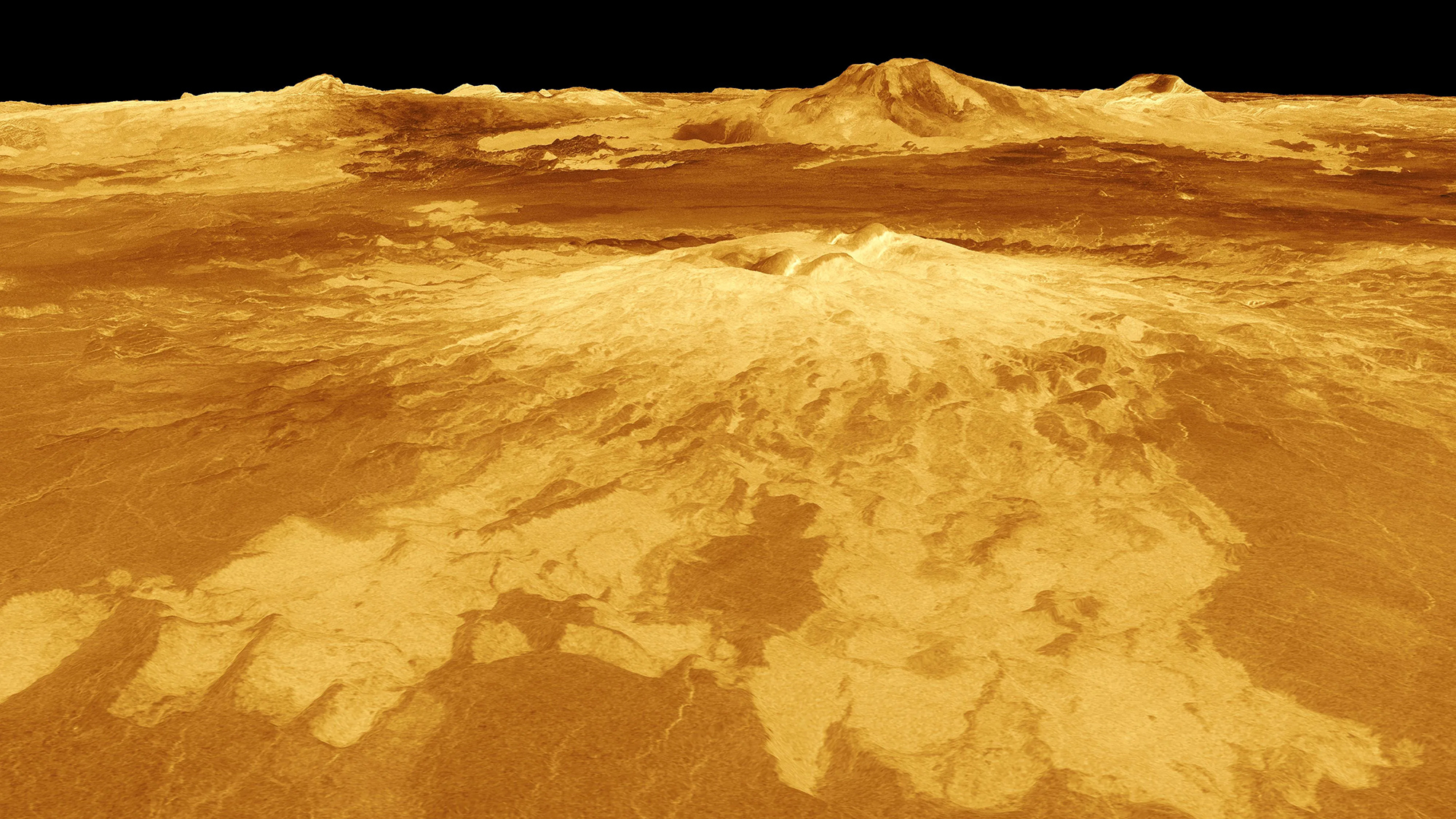

Despite being our closest planetary neighbor, Venus is a pretty inhospitable place. It is about 100 times hotter than Earth and spacecraft exploring its thick atmosphere have been crushed in only two hours. However, Venus may have once had tectonic plate movements that are similar to what occurred during Earth’s early days. The new finding gives astronomers some novel scenarios to evaluate regarding the possibility of early life on Venus, its evolutionary past, and the history of the solar system. The findings are described in a study published October 26 in the journal Nature Astronomy.
[Related: We finally know why Venus is absolutely radiant.]
In the study, researchers used atmospheric data from Venus and computer modeling to show that the composition of the planet’s current atmosphere and surface pressure could have only resulted from an early form of plate tectonics. This process is critical to life and involves multiple continental plates pushing, pulling, and sliding beneath one another.
On Earth, these plate tectonics have intensified over billions of years. This process has formed new continents, mountains, and led to the chemical reactions that stabilized Earth’s surface temperature. It also created an environment that is more conducive for life to develop.
Venus went in the opposite direction and has surface temperatures of 867 degrees Fahrenheit, hot enough to melt lead. Astronomers have always believed that Venus has a “stagnant lid.” This means that the planet’s surface only has a single plate with minimal amounts of give, so most of the gasses remain trapped beneath the outer crust lid.
The team used current data on Venus’ atmosphere as the endpoint for these models and started by assuming Venus has had a stagnant lid through its entire existence. They were quickly able to see that computer simulations recreating the planet’s current atmosphere didn’t match up with where Venus is now.
Next, the team simulated what would have had to happen on Venus for the planet to get to its current state. They eventually matched the numbers almost exactly when they accounted for limited tectonic movement early in Venus’ history followed by the stagnant lid model that exists today.
Due to the abundance of nitrogen and carbon dioxide present in Venus’ atmosphere, the team believes that Venus must have had plate tectonics about 4.5 billion to 3.5 billion years ago after the planet formed. They suggest that like on Earth, this early tectonic movement would have been limited in terms of the number of plates moving around and in how much they shifted. The process also would have been occurring on Venus and Earth at the same time.
“One of the big picture takeaways is that we very likely had two planets at the same time in the same solar system operating in a plate tectonic regime—the same mode of tectonics that allowed for the life that we see on Earth today,” study co-author and Brown University planetary geophysicist Matt Weller said in a statement.
[Related: A private company wants to look for life just above Venus.]
According to the team, this further bolsters the possibility that microbial life existed on ancient Venus. It also shows that at one point, both Earth and Venus were even more alike than scientists previously thought before diverging. Both planets are about the same size, have the same mass, density, and volume and live in the same solar neighborhood.
The work also shows the possibility that plate tectonics on all planets might simply come down to timing, so life itself may also be a product of the perfect timing.
“We’ve so far thought about tectonic state in terms of a binary: it’s either true or it’s false, and it’s either true or false for the duration of the planet,” study co-author and Brown University geobiologist and geophysicist Alexander Evans said in a statement. “This shows that planets may transition in and out of different tectonic states and that this may actually be fairly common. Earth may be the outlier. This also means we might have planets that transition in and out of habitability rather than just being continuously habitable.”
Understanding the transition of tectonic states will be important for future studies of nearby moons and distant exoplanets. Jupiter’s fourth largest moon Europa has already shown evidence of Earth-like plate tectonics.
“We’re still in this paradigm where we use the surfaces of planets to understand their history,” Evans said. “We really show for the first time that the atmosphere may actually be the best way to understand some of the very ancient history of planets that is often not preserved on the surface.”
Future NASA DAVINCI missions will measure gasses in Venus’ atmosphere and could help solidify this study’s findings and the details of how this happened may hold important implications for Earth.
“That’s going to be the next critical step in understanding Venus, its evolution and ultimately the fate of the Earth,” Weller said. “What conditions will force us to move in a Venus-like trajectory, and what conditions could allow the Earth to remain habitable?”
